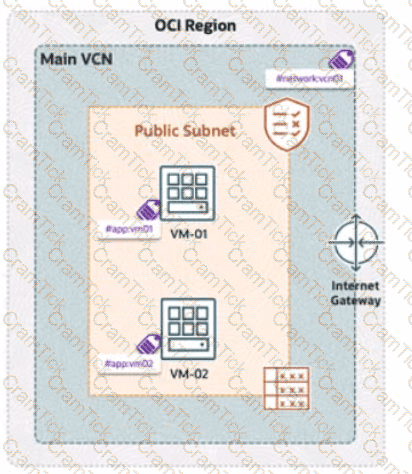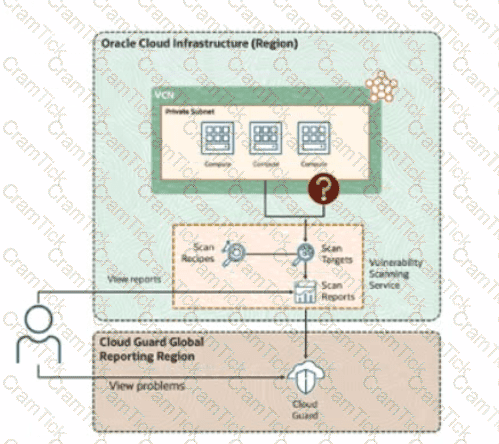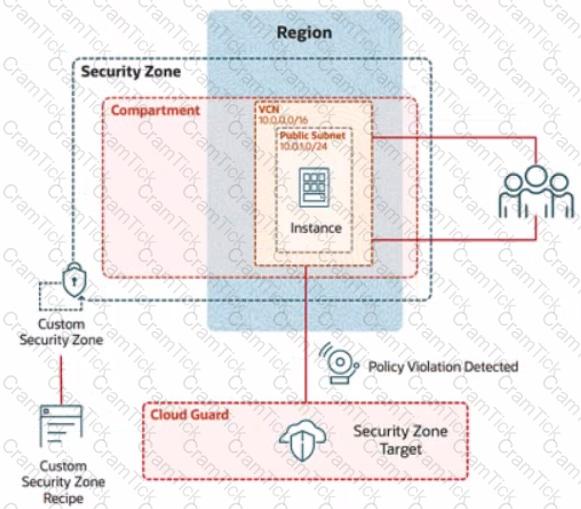Task 7: Verify the OCI Certificate with Load Balancer
Verify HTTPS connection to the load balancer by running the following command in Cloud Shell
curl -k https://
Enter the following URL in the web browser:
https://
If prompted with a certificate error, accept the risk and continue.
Verify web page content by ensuring the text, "You are visiting Web Server 1" from the index.html file is displayed in the browser
A company has deployed OCI Zero Trust Packet Routing (ZPR) to secure its network. They have two compute instances, VM1-01 and VM-02, in a public subnet. VM-01 is tagged with the security attribute app:vm01, and VM-02 is tagged with app:vm02. The VCN is labeled with network:vcn01, The ZPR policy states:


"What is the expected outcome of this policy?
Based on the provided diagram, you have a group of critical compute instances in a private subnet that require vulnerability using the Oracle Cloud Infrastructure(OCI) Vulnerability Scanning Service (VSS).

"What additional configuration is required to enable VSS to scan instances in the private subnet
Within OCI IAM identity domains, the AD Bridge component serves a critical role. How does the AD Bridge functionality specifically enhance Identity and Access Management (IAM) practices?
"Your company is building a highly available and secure web application on OCI. Because of increasing malicious web-based attacks, the security team has mandated that web servers should not be exposed directly to the Internet.
How should you architect the solution while ensuring fault tolerance and security?
Challenge 2 -Task 1
In deploying a new application, a cloud customer needs to reflect different security postures. If a security zone is enabled with the Maximum Security Zone recipe, the customer will be unable to create or update a resource in the security zone if the action violates the attached Maximum Security Zone policy.
As an application requirement, the customer requires a compute instance in the public subnet. You therefore, need to configure Custom Security Zones that allow the creation of compute instances in the public subnet.
Review the architecture diagram, which outlines the resoures you'll need to address the requirement:

Preconfigured
To complete this requirement, you are provided with the following:
Access to an OCI tenancy, an assigned compartment, and OCI credentials
Required IAM policies
Task 4: Create a Public Subnet
Create a public subnet named IAD-SP-PBT-PUBSNET-01, within the VCN IAD-SP-PBT-VCN-01
use a CIDR block of 10.0.1.0/24 and configure the subnet to use the internet Gateway
Task 3: Create a Master Encryption Key
Note: OCI Vault to store the key required by this task is created in the root compartment as PBI_Vault_SP
Create an RSA Master Encryption Key (MEK), where:
Key name: PBT-CERT-MEK-01-
For example, if your username is 99008677-lab.user01, then the MEK name should be PBT-CERT-MEK-01990086771abuser01
Ensure you eliminate special characters from the user name.
Key shape: 4096 bits
Enter the OCID of the Master Encryption Key created in the provided text box:


